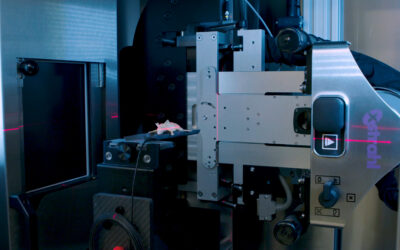Department of Clinical Sciences, Head, Section of Oncology and Harrington Oncology Program, Tufts University School of Veterinary Medicine, 200 Westboro Road, North Grafton, MA, 01536, USA
Abstract
Radiation is becoming widely available to treat tumours in veterinary patients. Orthovoltage machines capable of delivering low energy external beam radiation are less versatile than linear accelerators and cobalt-60 machines that deliver megavoltage radiation. In addition, electron beam capabilities that are available with some linear accelerators allow more targeted treatment in smaller patients. Acute effects of radiation are to be expected, but in nearly all cases such side effects resolve without limiting protocols. In contrast, late effects of radiation are dose limiting and are more likely with higher doses per treatment fraction. Protocols that use smaller doses per fraction have a lower risk of late effects thereby allowing higher total doses to be delivered which leads to higher tumour control rates. It is possible to provide long-term tumour control in cats and dogs using radiation therapy, particularly for mast cell tumours, soft tissue sarcomas, oral tumours and brain tumours in dogs and soft tissue sarcomas and skin tumours in cats. Individualization of treatments for tumours based on tumour staging and proliferative fraction should be considered, rather than making blanket assumptions about the behaviour of histologically determined tumour types.







